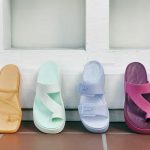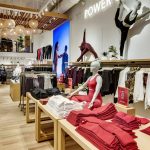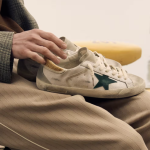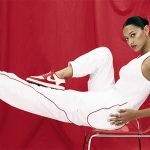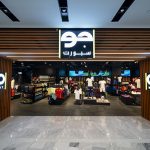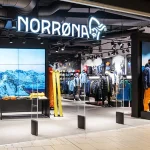In its first analyst meeting in three years, Nike, not uncharacteristically, heralded an ambitious five-year goal to expand sales by 40% to $27 billion by 2015. In its last fiscal year ended May 31, 2009, sales reached $19.2 billion. Significant growth was forecast for retail, foreign markets, apparel, and action sports for the Nike brand. Converse, Hurley and Umbro are also being counted on to deliver outsized growth.
Overall, Nike, Inc. kept its long-term growth forecast for annual sales increasing in the high-single digit percentage range with EPS rising in the mid-teens. “This has been our model for the last decade and it will continue to serve as our North Star,” said Nike, Inc. President and CEO Mark Parker at an investor presentation in New York City last week.
Along with his management team, Parker then spent the three hour presentation explaining how the company was “drilling down and getting surgical in how we invest and leverage our resources” to realize its sales goals.
Still, much of the talk centered on long-held mantras around innovation, inspiration, and consumer connections.
The Nike brand alone is expected to reach $23 billion in fiscal 2015, versus $16.7 billion in fiscal 2009. The key categories driving the Nike brand growth:
Action Sports: Described as the “fastest growing category” within the Nike brand, it's comprised of Nike 6.0, Nike SB and most recently, Nike Snow. The company anticipates doubling its current estimated $390 million business by 2015.
Athletic Training: Estimated at $1.4 billion and covering cross training, American football and baseball, innovations such as Nike Pro Combat base layer apparel and the Trainer1 shoe are expected to drive growth.
Basketball: After running flat a few years ago, the basketball business at $1.7 billion in sales – is “vibrant” and growing again, thanks to athletes such as Lebron James and Kobe Bryant and successful releases such as the Hyperdunk, which has sold 1.5 million pairs to date. The Kobe shoe is up over 300% year-to-date.
Football (Soccer): With Nike Brand Football revenue of approximately $1.7 billion, the company is launching its largest-ever presence at the World Cup including new footwear, national team kits, and Nike Football+.
Running: With approximately $2.1 billion in revenue, innovations such as Flywire, Lunar Cushioning, and Nike+ enabled footwear are feeding growth. Nikeplus.com, the world’s largest running club with close to 3 million registered members, is also helping reach new customers.
Sportswear: The company’s largest category at about $4.9 billion continues to leverage new performance ideas from the six sports categories as well as franchise products like the Air Force 1 (which sells 15 million pairs a year 25 years after its debut).
Women’s Training: With nearly $740 million in sales and the number one position in women’s training footwear in the U.S. and the top five European markets, a new generation of Nike Free footwear in concert with more compelling apparel offerings continues to drive the category.
Nike officials particularly highlighted apparel's potential. Nike – which has single-digit apparel share in the U.S for the past several years and low-double-digit share in Europe – has centralized its apparel team around the world and is reducing the number of styles, vendors and materials it uses to focus on top-selling items such as T-shirts, track jackets and its Pro line of performance gear. Eric Sprunk, Nike's vice president of product and merchandising, said Nike plans to quadruple the investment it makes in apparel innovation and trends each year over the next five years. “Apparel is the single biggest opportunity that we have as a company,” Sprunk said.
In discussing geographic opportunities, the company sees mid-single-digit growth in developed geographies (North America, Western Europe, and Japan), targeting an additional $3.0 billion to $3.5 billion of annual revenue by the end of fiscal 2015. Additionally, the company sees low-double-digit growth in developing market geographies (Greater China, Central & Eastern Europe, and Emerging Markets), also adding $3.0 billion to $3.5 billion in annual revenue by the end of fiscal 2015.
Regarding the Direct-to-Consumer business, Nike plans to double its $2.4 billion Nike brand retail sales, which includes online sales, in five years. This includes plans to open approximately 250-300 new Nike-branded stores worldwide. It also plans to drive accelerated growth in digital commerce, leveraging the explosive growth of NikeiD.
Overall, Nike expects mid-teens growth in its Direct-to-Consumer Business which should contribute an additional $2.2 billion to $2.6 billion by 2015.
The company sees three distinct retail formats:
Brand Experience stores, ranging from 12,000-20,000 square feet in “A” locations in key markets, will feature upwards of eight categories of product and allow for consumer customization;
Category Experience stores will range from 3,000 to 6,000 square feet and focus on the Nike brand. In this format, a running store has already opened in the Stanford (CA) Shopping Center and a soccer shop will spring up in Manchester, England this year, and;
Best of Nike Experience will focus primarily on international markets in conjunction with local retailers.
But Nike said its wholesale business model is expected to continue to be the primary driver of long-term growth, with retail partners still expected to account for more than 80% of overall business by 2015.
Moreover, it highlighted an increased focus on working with retail partners to create more elevated and differentiated consumer experiences including execution of category-segmented concepts within key markets. Officials touted the success of its House of Hoop stores with Foot Locker. Fifty House of Hoops will be in place by the close of this year and sales were up 46% in its third quarter.
Nike officials also touted a new initiative, Nike Running Lab, in a Finish Line store that features apparel customization.
“We are creating a new consumer experience here,” said Gary DeStefano, Nike's president, global operations. “Our ability to customize apparel in this space has surprised us. We've only been open a week. The first week in one store, we sold 100 customized T-shirts just out of one location.”
Finally, officials highlighted a new in-store concept, Nike's Fieldhouse, in Dick's SG that covers six categories in one section.
“We believe Dick's is actually creating their own brand of distinction and separation in their own marketplace here,” said DeStefano. “There is a commitment to roll out 20 of the large-format doors and 100 of what we're calling the Evolution-plus doors.”
Overall, Nike plans to invest $500-$600 million in capital over the next five years to develop the Direct-to-Consumer business and build capabilities to support both owned and wholesale retail productivity and performance.
Parker cited the need to create “more surgical go-to-market strategies” that could include Nike-owned concepts, mono-brand stores, multi-brand executions and new strategies with retail partners.
“And you can expect us to invest significantly to support both owned and wholesale retail productivity and performance,” said Parker.
“We are going to grow owned retail. Nike brand Direct-to-Consumer in all of the geographies will double by 2015,” added Jeanne Jackson, Nike's president, Direct-to-Consumer. “But, more importantly, it's the type of growth, better assortments flowing in a more timely manner, locally relevant with stores that operate more efficiently and give us the tools to help our partners become better retailers as well.”
Other Businesses (Cole Haan, Converse, Hurley, Nike Golf, and Umbro) are expected to see low-double-digit growth over the five-year period, adding $1.5 billion to $2.0 billion of revenue by the end of fiscal 2015 or double current levels.
Converse, which is “approaching $1 billion,” is expected to double in size over the next five years. The brand was doing $300 million in sales when acquired by Nike in 2003. Converse will also open its first full-priced Converse store in Boston this summer. But much Converse's growth will stem from Nike's assuming ownership of the brand in China and the U.K. by 2011. The brand is only owned and managed by Nike in the U.S. and Canada. Including licensed businesses Nike doesn't directly manage, Converse's sales are about $2.2 billion.
Hurley, currently a $200 million business, is expected to more than double to over $500 million by 2015. Eunan McLaughlin, Nike's president, affiliates, described Hurley as “still a very small business, predominately based on the West Coast in the USA.”
Umbro's growth potential is seen as similar to Converse. Acquired under “very difficult circumstances where the brand was certainly going through very, very difficult times,” McLaughlin said Umbro should continue to benefit from a better organizational structure. NKE only manages the business directly in the U.K. and significant opportunities exist as it assumes direct control elsewhere.
Nike Golf, a $650 million business, is expected to benefit from expansion in China, golf becoming an Olympic sport in 2016, and the return of Tiger Woods.
Nike plans to generate total cash flow from operations of $12 billion by 2015. The company will use $5 billion of that to repurchase shares. Parker also said Nike would consider buying other businesses, especially if it enables it to explore opportunities outside its portfolio.
“If an opportunity is something that we believe in and we understand, and it's something that we can improve and leverage, add value by adding real innovation, and leveraging the resources and the capabilities that we have then we will explore it,” said Parker. “This is our path to delivering shareholder value.”

